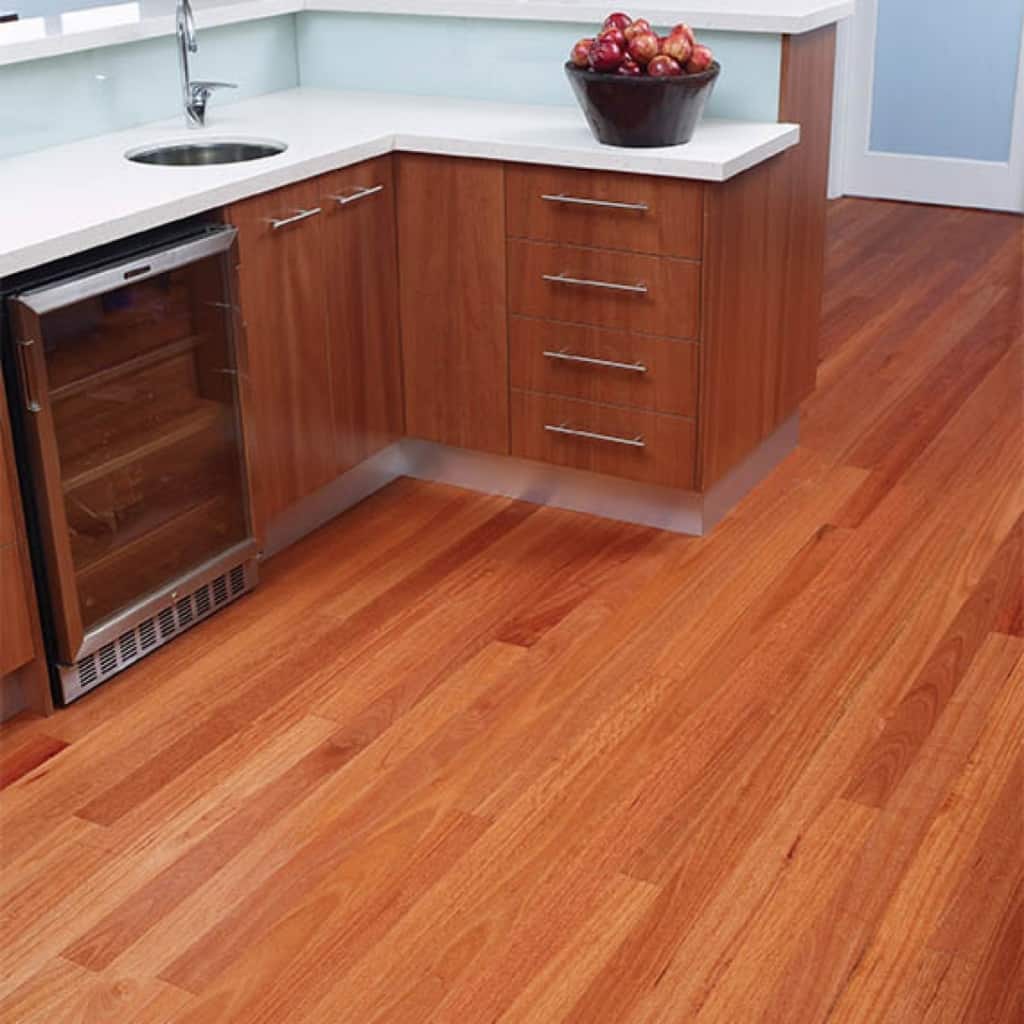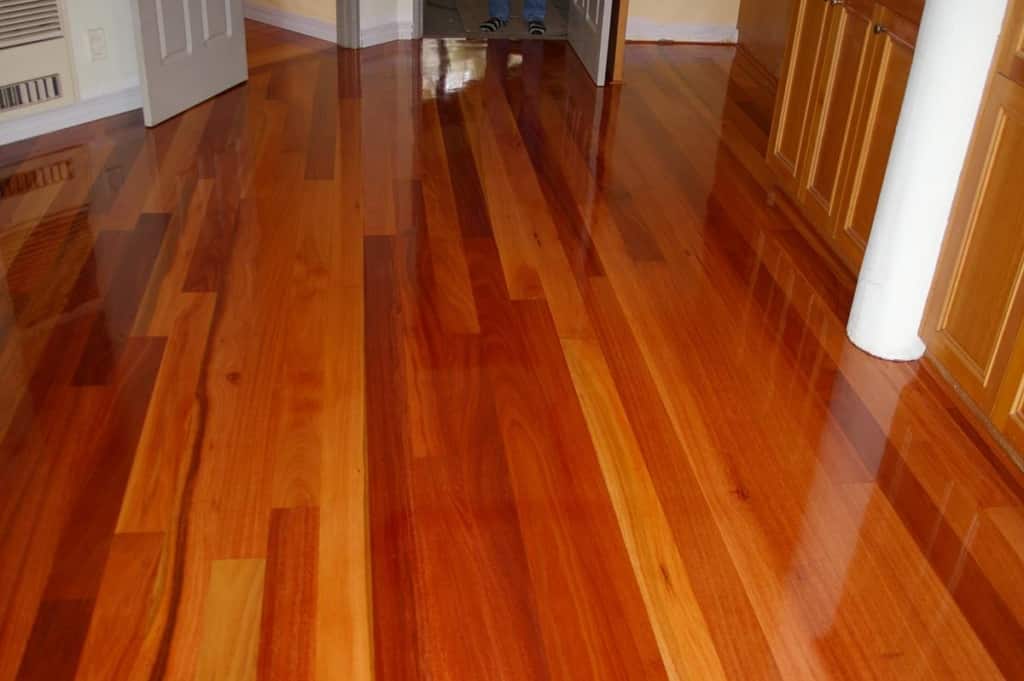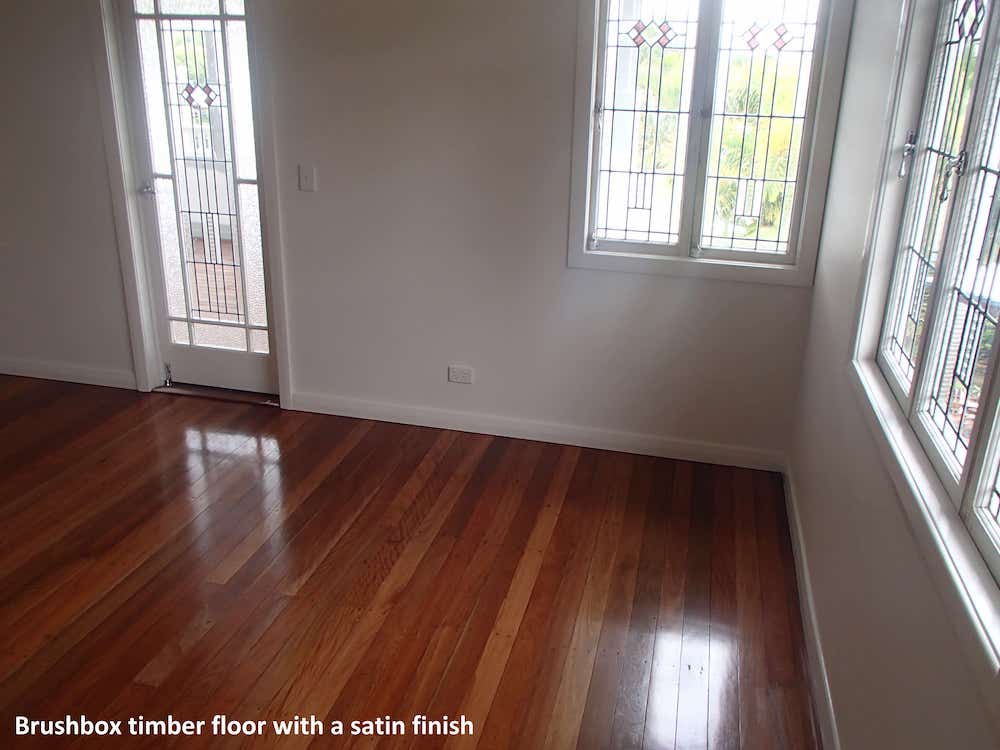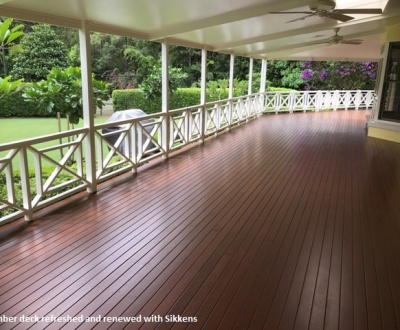Australian hardwood timber is both durable and gorgeous, providing a home with an organic warmth, softness and tactility that no other flooring material can match. Solid Australian timber floors exude natural beauty and can endure decades of use. This guide explores 15 native Australian hardwood timber species, including their colours, textures, grains, qualities, and practical applications to inspire your home’s design.
#1 Australian Cypress Pine

Botanical name: Callitris Columellaris
Colour: Australian Cypress Pine is renowned for its unique golden brown hue with pale cream, orange and light yellow highlights and occasional dark brown streaks.
Texture and grain: The timber is characterised by a straight grain, fine even texture and stunning decorative tight knots in black and chocolate brown.
Origin: Western New South Wales, Victoria and central Western Queensland
Qualities: Australian Cypress Pine contains aromatic resins, which contribute to the timber’s natural resistance against termites.
Applications: Australian Cypress Pine’s distinctive tight knots enhance its decorative appeal. This unique aesthetic, combined with its high durability, make it the perfect choice for flooring, decking, furniture, joinery, lining, cladding or any exposed surface in home design.
#2 Blackbutt
Botanical name: Eucalyptus Pilularis
Colour: Blackbutt comes in a variety of shades, from medium honey brown to creamy blonde to light brown with a tinge of pink.
Texture and grain: Blackbutt has a straight grain with an even texture.
Origin: New South Wales and Queensland
Qualities: With its impressive fire resistance, Blackbutt can be used in bushfire-prone areas without the need to apply a fire retardant treatment.
Applications: A strong, durable hardwood, Blackbutt can be used for a range of exterior and interior applications including framework, decking and flooring. Its subtle colouring makes it ideal for creating an airy, light neutral interior.
#3 Brushbox
Botanical name: Lophostemon Confertus
Colour: Brushbox has long been sought after for its range of beautiful, rich colours, including pale pink grey, light red-brown and deep russet.
Texture and grain: Brushbox has a curly, interlocking grain and fine, even texture.
Origin: Coastal Queensland and northeastern New South Wales
Qualities: Brushbox’s high density makes it highly resistant to wear and splintering.
Applications: This native Australian timber’s interlocking grain makes it attractive for joinery, flooring, cladding, panelling, framing and laminated beams. Brushbox makes an excellent base for paints and stains. However, its natural waxiness makes it incompatible with highly solvent floor finishes.
#4 Flooded (Rose) Gum

Botanical name: Eucalyptus Grandis
Colour: Flooded Rose Gum creates a warm, charming aesthetic, combining shades of deep yet light pink, peach and pale red-brown.
Texture and grain: Flooded Rose Gum has a uniform, straight to slightly interlocked grain. The timber is occasionally decorated with insect trails and pinholes that add to its character and beauty, such as the iconic weaving or ‘scribbling’ pattern left by a scribbly borer. It has a moderately coarse, even texture.
Origin: New South Wales and Queensland
Qualities: Flooded Rose Gum’s high density rating makes it resistant to termite damage.
Applications: Rose gum is extremely versatile for construction and decorative applications. It is an ideal choice for house framing, cladding, joinery, interior floorboards and exterior decking, as well as fine furniture and durable outdoor furniture.
#5 Jarrah (Swan River Mahogany)

Botanical name: Eucalyptus marginata
Origin: South-west Western Australia
Colour: Jarrah comes in a variety of shades that reflect the Western Australian landscape: soft salmon pink, blonde, rich red-brown and soft burgundy.
Texture and grain: Jarrah has an interlocked or wavy grain with a medium to coarse texture.
Qualities: Jarrah boasts a staggering 15 percent higher density than oak and natural resistance to weather, rot, termites, and marine borers. This timber will not burn unless exposed to a constant flame.
Applications: Jarrah is a unique Australian hardwood renowned for its durability, making it a popular choice for home flooring, joinery, indoor and outdoor furniture. Jarrah readily accepts paint, stain or polish.
#6 Karri

Botanical name: Eucalyptus diversicolor
Colour: A lustrous hardwood timber native to Western Australia, Karri comes in appealing shades of golden pink or red-brown with creamy white streaking.
Texture and grain: Karri timber features a long, interlocked grain.
Origin: Western Australia
Qualities: Durable and slow-growing, karri timber
Applications: Karri timber is a popular timber used in flooring, paneling and joinery.
#7 Ironbark

Botanical name: Eucalyptus paniculate, Eucalyptus drepanophylla, Eucalyptus decepta, Eucalyptus sideroxylon, Eucalyptus mugga
Colour: Ironbark is available in pale to mid purple brown, dark chocolate brown, deep rich red and grey shades.
Texture and grain: Renowned for its tight cathedral grain pattern with recurring arch shapes, Ironbark has a moderately coarse texture with strong marbling.
Origin: New South Wales and Queensland
Qualities: Ironbark is especially hard, strong and durable.
Applications: Ironbark (both grey and red varieties) are one of the densest hardwood flooring options. Its high durability makes it ideal for decking and high-traffic areas of the home.
#8 Myrtle Beech

Botanical name: Nothofagus Cunninghamii
Colour: Myrtle Beech is a striking timber with rich red-brown, honey blonde or orange shades, streaked with light cream or light pink-brown.
Texture and grain: Myrtle Beech displays a glorious variety of grain patterns, including wavy, tiger stripes and burl. The wood has a fine texture and provides a very smooth finish.
Origin: Tasmania
Qualities: Prized by architects, Myrtle Beech takes on a deep lustre when polished.
Applications: Popular uses include crafting solid, high-quality furniture, joinery and cabinet making, flooring and feature panelling.
#9 Spotted Gum
Botanical name: Eucalyptus maculata
Colour: Spotted gum can range from pale grey-brown or honey green to soft cream or rich chocolate brown with purple streaks.
Texture and grain: Spotted Gum has a wavy grain, which can create an attractive rippled effect.
Origin: New South Wales and Queensland
Qualities: Spotted Gum is a tough, fire-resistant timber that can be used in areas that are vulnerable to bushfires without applying a fire retardant treatment.
Applications: Spotted Gum is suitable for framing, flooring, lining, decking and cladding. It can be painted, stained or polished.
#10 Victorian Ash (Alpine Ash)

Botanical name: Eucalyptus delegatensis
Colour: Victorian ash’s characteristic shade is a lovely, silky pale pink, blonde or light nutty brown. Victorian Ash hardwood is naturally an even, pale straw colour that accepts stains and paints well, giving you freedom and flexibility in creating your desired finish.
Texture and grain: Alpine ash has a straight, open and even grain, coarse texture and stunning fiddleback markings.
Origin: Tasmania, Victoria and southern New South Wales
Qualities: This timber is strong, stable and moderately hard. It is not resistant to termites.
Applications: Victorian Ash is best suited for interiors, such as flooring, decking, panelling, joists, trusses, staircases, window frames, doors and furniture.
11. Forest Red (Gums)

Botanical name: a mixture of Eucalyptus trees
Colour: Forest Reds are distinguished by their deep burgundy colour—a striking, eye-catching shade that looks stunning on rear decks. It can also work indoors if you’re brave enough.
Texture and grain: Forest Reds have a tight, interlocking grain.
Origin: Southeastern Victoria, northern Victoria, New South Wales, and Queensland.
Qualities: This timber is versatile, stable, and incredibly strong.
Applications: Forest Reds are well-suited to posts, framing, decking, lining, and cladding. As such a strong material, this timber has even been used for railway sleepers!
12. River Red Gum

Botanical name: Eucalyptus camaldulensis
Colour: A deep and rich burgundy hue that ranges from light to dark.
Texture and grain: Interlocked with frequent gum veins
Origin: The River Red Gum is spread throughout Australia, including Western Australia, South Australia, coastal Queensland, New South Wales, and Victoria.
Qualities: Durable, strong, and if you like bold timbers, absolutely gorgeous.
Applications: As another strong type of timber, River Red Gum has a versatile number of applications, including flooring, framing, fencing, plywood and veneer manufacture, heavy construction, and railway sleepers. It was used as street paving in Sydney in the late 1800s.
13. Sydney Blue Gum

Botanical name: Eucalyptus saligna
Colour: Sydney Blue Gum comes in a range of colours, including soft pinks, dark pinks, and red-toned browns.
Texture and grain: A mostly straight grain, sometimes interwoven.
Origin: This tree grows along the eastern coast of Australia, from Bateman’s Bay in New South Wales right up to southeastern Queensland.
Qualities: Sydney Blue gum has a rating of 9 on the Janka scale, which makes it highly resistant to dents and knocks.
Applications: As such a strong timber, Sydney Blue Gum is ideal for flooring in high-traffic areas, decks, and also joinery and furnishings.
14. Tallowwood

Botanical name: Eucalyptus microcorys
Colour: Tallowwood has a warm and inviting golden colour that ranges from yellowish brown to paler shades. It can also contain a hint of green.
Texture and grain: This timber has an attractive wavy grain that curves and ripples along each plank. It’s fairly coarse, with an interlocking grain.
Origin: Tallowwood is endemic to eastern Australia, growing in forests near the coast of Queensland and New South Wales.
Qualities: This timber has a Janka rating of 8.6 and density of 990 kg/m³, which makes it strong but still workable by carpenters. It’s also highly durable against termites and rot.
Applications: Tallowwood’s durability makes it a popular choice for fencing, landscaping, and retaining walls. It can also be used in outdoor furniture, joinery, and of course, decking.
15. Turpentine

Botanical name: Syncarpia glomulifera
Colour: As with many hardwoods, turpentine timber comes in a variety of colours that ranges from deep red to red-brown.
Texture and grain: Turpentine has a wavy, interlocked grain that is mostly free of gum veins.
Origin: Turpentine is anative to New South Wales and Queensland, growing from Bateman’s Bay to Cooktown.
Qualities: This timber is extremely long-lasting, with a lifespan of 40 years or more.Applications: General house framing, decking, lining, and cladding. As such a strong hardwood, it’s also suitable for dance floors.
Brisbanes Finest Floors, with over 20 years of experience in adding wow to any wooden floor, internal or decking.
Request a free quote
Talk to us today and discuss your floor restoration, repairing your deck and new flooring.











